HOMEEarth and usLet's reproduce a volcanic form
![]()
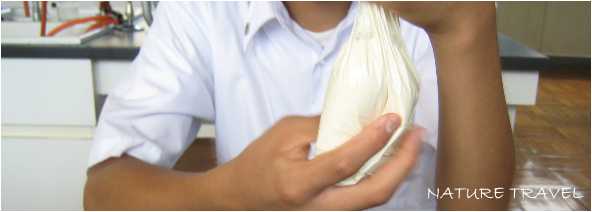
What we will learn
 |
|
Experiment
| Preparations | ||
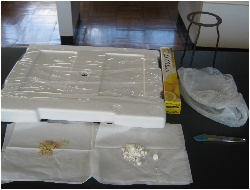 |
・Styrene foam ・wrap ・Stand (a camera tripod) ・Plastic bag ・Flour ・Soybean flour ・Cutter knife |
|
| Procedure | ||
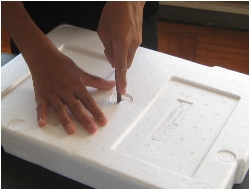 |
First, a hole about 3cm in diameter is made in the center of styrene foam. | |
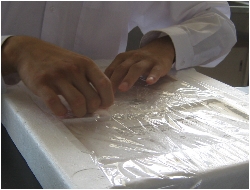 |
Cover the styrene foam with wrap so that it is fixed. The place which has the hole in styrene foam should also have a hole in the wrapping. | |
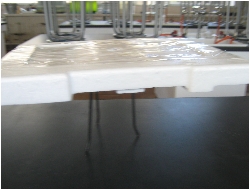 |
Put the styrene foam on the tripod. | |
 |
Next, we make the false magma.Flour and water are put in and mixed in
the plastic bag. (It is changing the rate of water to a fixed quantity of flour, and the strength of stickiness was changed this time) |
|
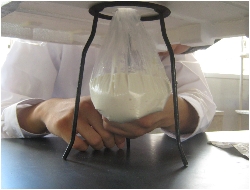 |
The plastic bag containing flour and water is fixed to the hole of styrene foam (good to use a Scotch tape etc. ). | |
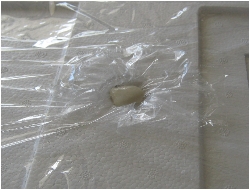 |
A plastic bag is lightly pushed from the bottom and it is made for false magma to come out for a while like the left picture. | |
 |
Soybean flour is carried and it hardens with a finger lightly.
This soybean flour become instead of the ground on magma. |
|
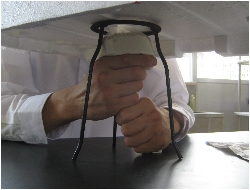 |
It is observed what kind of motion from the bottom, false magma is pushed out slowly and false magma spreads out. | |
| Result | ||
 |
||
 |
||
| Conclusion | ||
| The stickiness of false magma -- becoming so even that it being soft -- geographical feature of the form which seldom spreads highly was made, so that it was hard. This shows that the form of a volcanic mountain changes with stickiness of magma. | ||

NATURE TRAVEL by team130133 is licensed under a Creative Commons Attribution-NonCommercial 2.1 Japan
